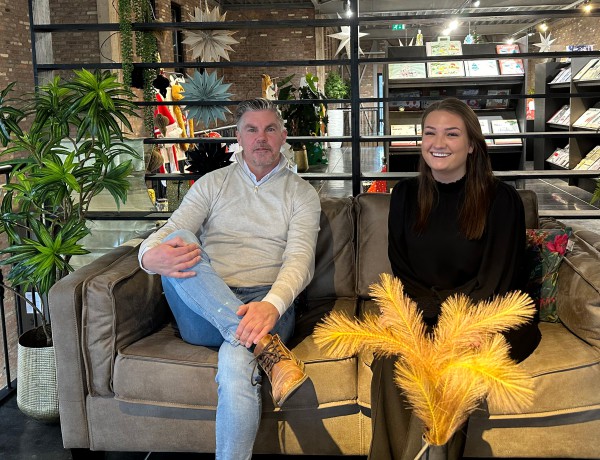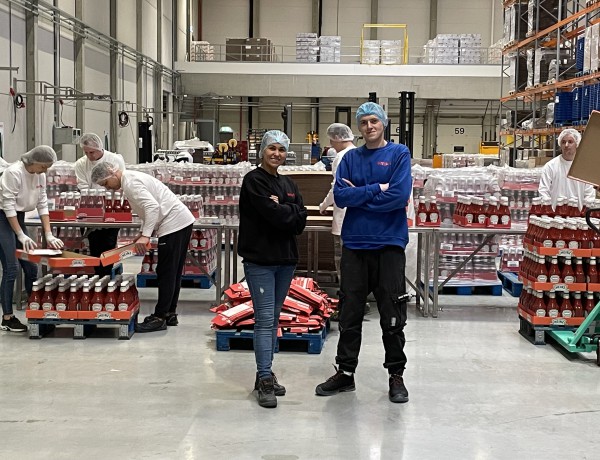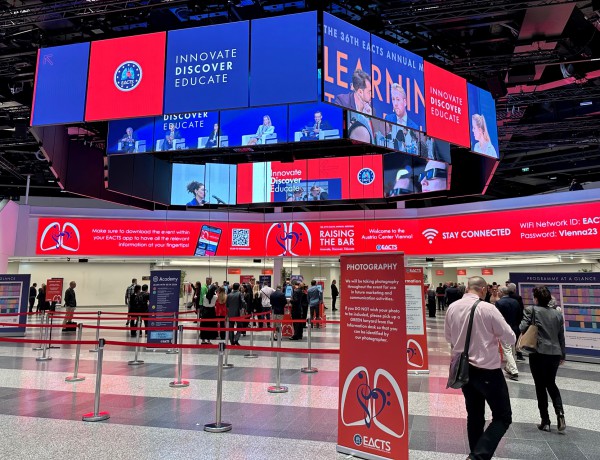The Vetipak site in Zeewolde is home to our successful long-term partnership with Bakker Logistics, part of the STEF group. It’s also where we work for Dynamic Products Factory, which develops creative products for the retail sector. We recently ensured that a multitude of party items in 3,300 displays reached their destinations with a well-known German retail chain. We joined forces to run the whole process from A to Z for D.P. Factory.
Navigating the ‘jungle of sustainability’ - Part 1: Chris Bruijnes, KIDV (Dutch Research Institute for Sustainable Packaging)
Manufacturers, packaging companies, retailers, government authorities and consumers... we all struggle to meet the challenges of sustainability. Things need to improve – that much is clear. But how? We set out to find answers in the ‘jungle of sustainability’. In the first part of this series, we talk to Chris Bruijnes, managing director of the Kennisinstituut Duurzaam Verpakken (Research Institute for Sustainable Packaging), who advocates an integrated approach above all.
Impatient as we are, we get right to the point by presenting the KIDV director with a straightforward choice: ‘Paper or plastic?’ After all, his research institute coined the phrase ‘battle of the materials’, which we feel is apt, as it often does feel as though you need to be either pro-plastic or pro-paper. So, tell us, Chris: which is it? Paper or plastic?
He laughs: “I really do have to choose one of those options, don’t I?” Then, after hesitating for a moment: “Sorry, but I’m not going to, as it would mean disregarding the complexity of the whole sustainability issue. Sometimes paper offers the best packaging solution, and sometimes it’s plastic. Then there are myriad other factors that determine whether a certain type of packaging is sustainable, which is why we developed a model for that very purpose.”
Five perspectives
Chris is referring to Vijf perspectieven op duurzaam verpakken (‘Five perspectives on sustainable packaging’), a KIDV model.
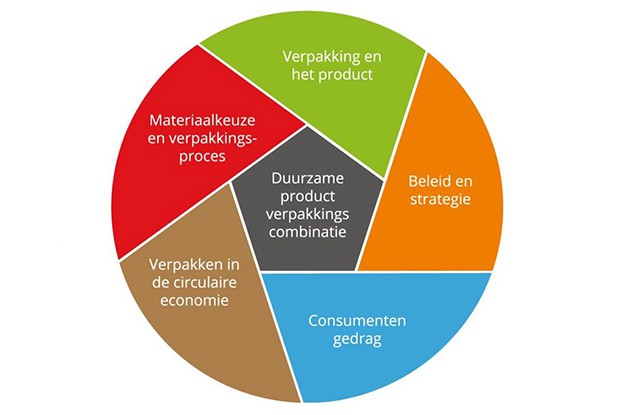
Five perspectives on sustainable packaging
- Choice of materials and packaging process (red)
- Packaging and products (green)
- Policy and strategy (orange)
- Consumer behaviour (blue)
- Packaging in the circular economy (brown).
“As we move towards a more sustainable economy, each of the individual components are important, but you cannot consider them separately. As a manufacturer or packaging company, you can be as innovative as you like, but when consumers neglect to properly sort your sustainable packaging, it completely defeats the purpose. That’s why we refer to ‘sustainable product-and-packaging combinations.’”
Inevitable cucumber
According to the KIDV director, it’s not fair to hold only manufacturers and their packaging partners responsible for sustainability issues. “That’s something you commonly see in the media and in the public debate. It bothers me, as does the lack of knowledge among those involved in the discussion.”
Take, for example, the inevitable cucumbers and their packaging. “It’s a typical example, of course, but a good one none the less. Vegetable producers don’t wrap their cucumbers in plastic film for fun; they do it to extend their shelf life, something we, as consumers, actually want them to do. What matters in these types of situations is not just the packaging, but the optimum of packaging materials and shelf life.”
“A ‘battle of the materials’ is not the solution:
both have their pros and cons”
While we agree with that integrated approach, of course, for the purpose of this series we would like to focus on what we – manufacturers and packaging companies – can do to operate as sustainably as possible. In terms of the model: what trends play a role in the red and green segments?
Red – Choice of materials and packaging process
“When it comes to ‘Choice of materials and packaging process’, we tend to think in terms of a ‘battle of the materials’. But such a battle is ultimately not the solution. Both materials have their pros and cons; it’s about taking advantage of the pros and avoiding the cons.”
Here, too, it’s about adopting an integrated approach, Chris says. “It’s not easy, but it’s the only right way to go about it. When selecting materials, manufacturers and packaging companies should consider the overall picture. That includes not just protective properties, marketing and price, but also reusability, recyclability and circularity. For example, are you using a mono-material or a laminate? If you decide to use a mono-material, this can usually be recycled; and most paper packaging actually has plastic coating...”
He cites the example of paper bread bags with clear plastic windows. “In theory, those paper bags are fine, of course, and they’re undoubtedly a smart move from a marketing perspective. But as soon as you add that plastic window, it’s detrimental to recyclability, as it can’t be mixed in with either paper waste or plastic waste. I regard it as the responsibility of the manufacturer and the packaging company to think of what happens after the product has been used.”
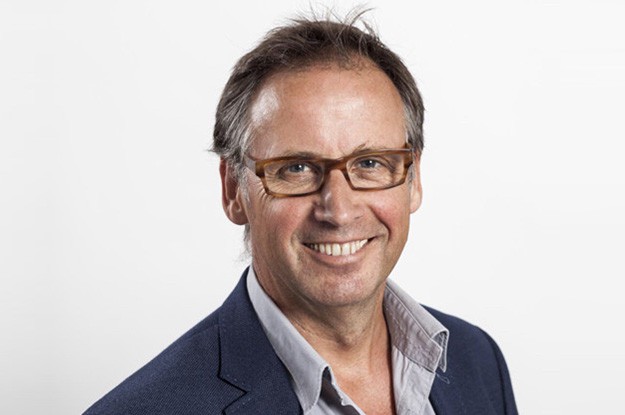
“Plastic is a fantastic material,
provided we manage it conscientiously”
Chris Bruijnes, managing director KIDV (Research Institute for Sustainable Packaging)
Plastic gets a bad press, but that’s somewhat misleading: “Plastic is a fantastic material, provided we manage it conscientiously. In some cases, it’s better to reuse your plastic dozens of times than recycle your paper. That does mean you need to research each product, sure, but then for us – as a society – it’s about facing the consequences of our actions.”
Green – Packaging and products
When it comes to ‘Packaging and products’, Chris mentions adopting more sustainable standards and improving product safety. “We’re seeing a trend in the use of recycled materials. There are still some challenges ahead in terms of the use of recycled plastic in food packaging, as you need to comply with food safety requirements. But the examples are already there, and this provides opportunities for creating a circular economy for packaging.”
So, what about materials other than paper and plastic? They’re being used, but the KIDV has not observed any major changes to date. “The use of tin could become more widespread, and materials such as paper foam also show potential. But for now, the discussion tends to be limited to paper and plastic.”
“I think packaging companies and manufacturers should team up together.
Consumers have given you a licence to operate, so be sure to grab that opportunity!”
Role of packaging companies
So, what is the challenge for packaging companies as far as sustainability is concerned? The KIDV director starts by putting it all into perspective: “Packaging companies often of course simply have to make what their customers want them to make. If they don’t, their customers will go to a competitor.”
But isn’t that too easy? Isn’t doing business about more than earning a profit alone? “Absolutely! The market asks for sustainability – demands it, even. I think packaging companies and manufacturers should team up together: doing research, determining the strategy, making choices... And make no mistake: the larger packaging companies tend to be more knowledgeable than manufacturers. This creates responsibilities in addition to opportunities. Consumers have given you a licence to operate, so be sure to grab that opportunity, because at the end of the day, it’s a business like any other.”
Blogseries
This blog is part of our Navigating the ‘jungle of sustainability’-series. Please read the other blogs:
